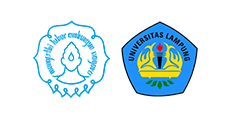Comparative Analysis Between Using Google Meet and Gather Town Video Conferencing Platforms Viewed from User Experience Using meCUE Questionnaire on Students
Abstract
Keywords
Full Text:
PDFReferences
Arikunto, Suharsimi. 2006. Prosedur Penelitian Suatu Pendekatan Praktik. Jakarta: Rineka Cipta
Aisyah, S., & Sari, D. I. (2021). Efektivitas Penggunaan Platform Google Meet Terhadap Hasil Belajar Siswa. JURNAL MathEdu (Mathematic Education Journal), 4(1), 45–49.
Al-Maroof, R. S., Salloum, S. A., Hassanien, A. E., & Shaalan, K. (2020). Fear from COVID-19 and technology adoption: the impact of Google Meet during Coronavirus pandemic. Interactive Learning Environments, 0(0), 1–16. https://doi.org/10.1080/10494820.2020.1830121
Bhardwaj P. (2019). Types of sampling in research. Journal of the Practice of Cardiovascular Sciences, 5(3), 157. DOI: 10.4103/jpcs.jpcs_62_19
Hadi, R. A. P. P., Az-zahra, H. M., & Wijoyo, S. H. (2019). Evaluasi User Experience Menggunakan meCUE Questionnaire (Studi Kasus Pada Aplikasi Traveloka Dan Pegipegi). Jurnal Pengembangan Teknologi Informasi Dan Ilmu Komputer E-ISSN, 2548(3), 964X.
Juniartini, N., & Rasna, I. (2020). Pemanfaatan Aplikasi Google Meet Dalam Keterampilan Menyimak Dan Berbicara Untuk Pembelajaran Bahasa Pada Masa Pandemi Covid-19 1Nme. Jurnal Pendidikan Dan Pembelajaran Bahasa Indonesia, 9(2), 133–141.
Latifah, R., Budiyanto, C. W., & Saputro, H. (2022). Digital Transformation Readiness in Education: A Review. International Journal of Information and Education Technology, 12(8), 809–815. https://doi.org/10.18178/ijiet.2022.12.8.1688
Latulipe, C., & De Jaeger, A. (2022). Comparing Student Experiences of Collaborative Learning in Synchronous CS1 Classes in Gather.Town vs. Zoom. SIGCSE 2022 - Proceedings of the 53rd ACM Technical Symposium on Computer Science Education, 1, 411–417. https://doi.org/10.1145/3478431.3499383
Maricar, M. A., Pramana, D., & Putri, D. R. (2021). Evaluasi Penggunaan SLiMS pada E-Library dengan Menggunakan User Experience Question (EUQ). Jurnal Teknologi Informasi Dan Ilmu Komputer, 8(2), 319. https://doi.org/10.25126/jtiik.2021824443
Mashdurohatun, A., Susilo, A. B., & Bawono, B. T. (2021). Copyright Protection towards the Society 5.0. Journal of Southwest Jiaotong University, 56(2), 394–404. https://doi.org/10.35741/issn.0258-2724.56.2.32
McClure, C. D., & Williams, P. N. (2021). Gather.town: An opportunity for self-paced learning in a synchronous, distance-learning environment. Compass: Journal of Learning and Teaching, 14(2), 1–19. https://doi.org/10.21100/compass.v14i2.1232
Nur Fitria, T. N. (2021). Creating Sensation of Learning in Classroom : Education and Human Development Journal, 6(September), 30–43.
Purnamajati, A., K, I. N. B. A., & Perdana, D. (2020). Desain Produk Harvie Untuk Home Video Conference Pada Smart Home Menggunakan Raspberry Pi 3 Product Design Harvie in Home Video Conference for Smart Home Using Raspberry Pi 3. 7(3), 9019–9027.
Shirley Leo, et al. (2021). From Offline to Online Learning: A Qualitative Study of Challenges and Opportunities as a Response to the COVID-19 Pandemic in the UAE Higher Education Context. In Studies in Systems, Decision and Control (Vol. 334, pp. 203–217). https://doi.org/10.1007/978-3-030-67151-8_7
Shrestha, D. M., & Rogers, C. (2021). Recreating The Experience Of An In-Person Summer Internship Program Remotely. 12(1), 112–124.
Singh, R., & Awasthi, S. (2020). Updated Comparative Analysis on Video Conferencing Platforms- Zoom, Google Meet, Microsoft Teams, WebEx Teams and GoToMeetings. Easy Chair: The World for Scientist, 1–9.
Sugiyono. 2013. Metode Penelitian Pendidikan( Pendekatan Kuantitatif, Kualitatif, dan R & D). Bandung: Alfabeta.













